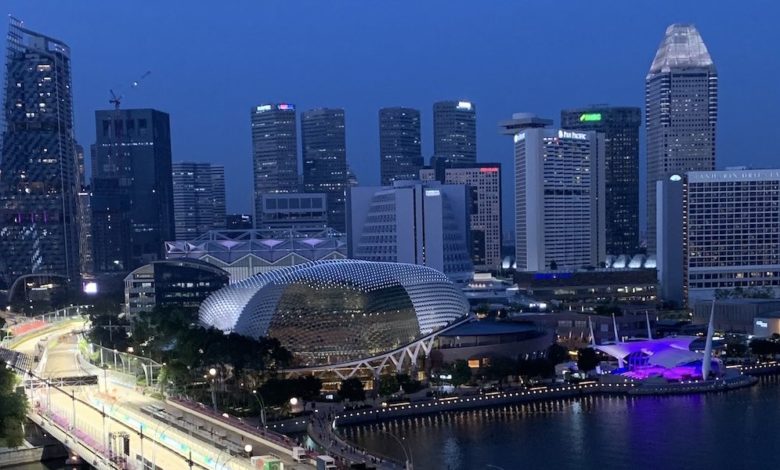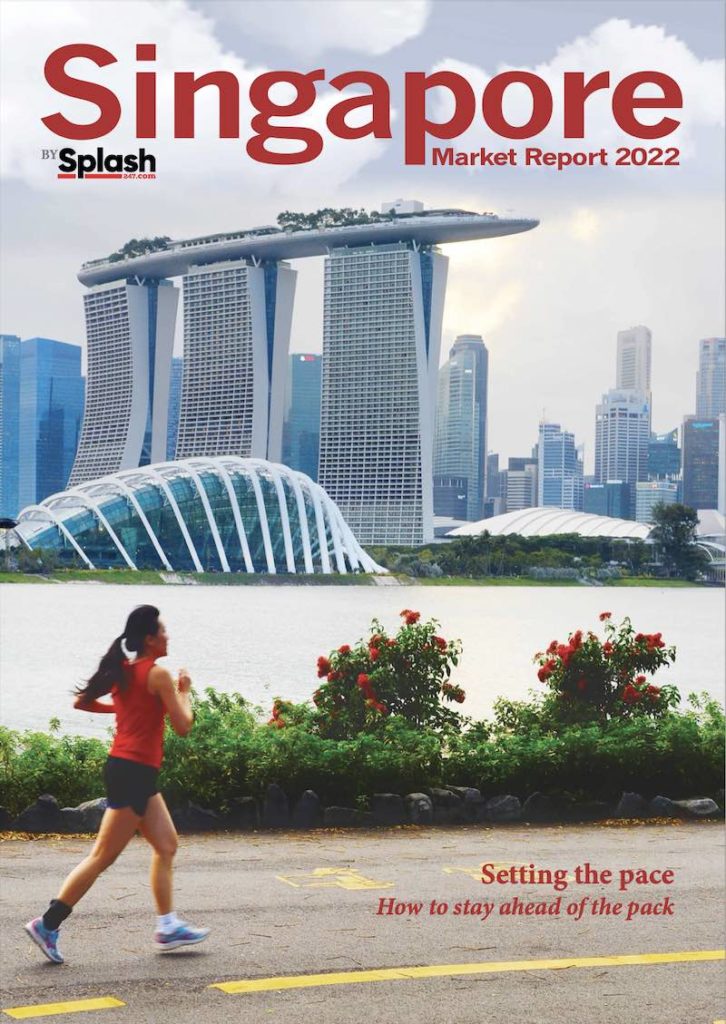Singapore’s digital progress

Singapore has encouraged the digitalisation of shipping for several years now. Splash assesses what the tangible local benefits have been.
Singapore was ranked number one under maritime innovation by the Menon Economics-DNV Leading Maritime Cities of the World report in January 2022 and it is little surprise – the investment and joined up thinking between government and the private sector has ensured the republic is well ahead in shipping’s headlong rush to digitalise.
To help maritime companies get started on their digital journey, the Maritime and Port Authority (MPA) launched the Maritime Digitalisation Playbook (MDP) in June 2020 with the Singapore Shipping Association and Infocomm Media Development Authority. The MDP has helped companies to formulate their digitalisation roadmaps, guide execution and benefit from maritime digital platforms.
Think global and share
Incentives are also provided to encourage maritime SMEs to embark on their digitalisation transformation. To ensure that digital solutions are accessible by SMEs, the Sea Transport Industry Digital Plan provides co-funding to support the adoption of pre-approved solutions.
The MPA has expanded the Sea Transport Industry Digital Plan in 2022 to ensure that over 3,000 SMEs in all subsectors of sea transport such as ship chandlers, shipbrokers, marine surveyors, shipmanagement, and ship operators, will be eligible to apply for co-funding for digital transformation projects.
In partnership with the Port Innovation Ecosystem Reimagined at PIER71, the MPA has been consolidating problem statements from the industry through the Smart Port Challenge since 2017, and nurturing marine tech start-ups to address these challenges through reimagining tech.
To build up a sustainable local pool of research specialist manpower, the Singapore Maritime Institute, with the support of the MPA, has funded four maritime research centres of excellence (CoEs). The CoEs have built up their deep domain expertise in ports modelling and simulation, maritime navigation and operation safety, maritime energy and sustainability and maritime autonomous surface ships capabilities.
It has also developed a wide range of technologies for the maritime sector, such as the simultaneous removal of sulphur oxides and nitrogen oxides emission, optimisation and deployment of automated guided vehicles for container terminal operations, and virtual reality technologies for training of high-risk scenarios.
In recent years, the Southeast Asian country has seen the private sector playing a role in incubating and nurturing maritime technology start-ups. An example is the Eastern Pacific Shipping Techstars programme, which identifies, cultivates and mentors technology start-ups to catalyse solutions to make shipping safer, more secure and more sustainable.
All of Singapore’s digital initiatives received an accelerator in the form of a global health scare.
“The covid-19 pandemic has accelerated the adoption of new technologies and digitalisation by many businesses within the maritime industry who have recognised the opportunities of increasing efficiencies and transparency, and utilising data to drive informed and better decision making,” says Henrik Hyldahn, the CEO of ShipServ.
Singapore can transition from a manual-intensive to analytics-intensive reality
Many pioneering initiatives developed on home soil have now been adopted around the world, but as Rajesh Unni, CEO of Synergy Marine Group, points out, those located in Singapore have benefitted first.
“There is a first mover advantage in this sense from being located here. We get to try these solutions first and we can learn these lessons before others,” Unni says.
There have been many initiatives launched in the maritime sector such as the Just in Time Planning and Coordination Platform which facilitates optimal arrival and departure of vessels to and from the Port of Singapore and enables faster ship turnaround times as well as reduces dwell time at the anchorages before berthing. This is achieved through the use of artificial intelligence in the optimisation and scheduling of port resources. The SG-Digital port is also expected to serve as a one-stop marketplace that can integrate with port and marine service providers to enable seamless access to services for customers and port users.
Morten Lind-Olsen, CEO of Norwegian software developer Dualog, reckons the Singaporean government has been a “frontrunner” when it comes to digitalisation.
“Ensuring good infrastructure and useful information for everyone to share globally is more important than ever,” he says, pointing out: “The assets are sailing globally and the future challenges are not limited to a specific region or country. Think global and share.”
Dr Shahrin Osman, regional head of maritime advisory for class society DNV, believes Singapore’s national focus on digitalisation can encourage people from analytics and other data adjacent fields to leverage their skills into entering the maritime industry.
In addition, digitalisation allows for greater automation and hence enables easier decision making for all stakeholders, promoting the creation of data-smart organisations.
“With successful digitalisation, Singapore can transition from a manual-intensive to analytics-intensive reality, therefore moving up the value chain,” Osman says.
Vinay Gupta, managing director of Union Maritime Management Services, argues it’s important shipping understands why it ought to embrace technology.
“Digitalisation is a means to an end and not an end in itself– it provides solutions for the problem that exist and makes the existing operations more efficient and transparent,” Gupta says, adding: “Once the local workforce comes to a point where they understand the challenges being faced by the industry and has the ability to find an efficient solution, I believe we will see more digital start-ups.”
“When it comes to recruiting digital natives locally, we think there is a good competitive labour market in this area,” says Carl Schou, the president of Wilhelmsen Ship Management. Singapore has developed an ecosystem that is conducive for local start-ups to thrive and a platform for foreign investments to fund these start-ups, Schou adds.
iO3 is one such example of a local digital start-up. Joanna Soh, vice president at the digitalisation platform, can see a few obvious benefits from when she and her team began.
Since digitalisation requires more complex skillsets, which Singapore has in abundance, it creates job opportunities for locals, Soh says.
Nevertheless, she says a few challenges still exist. One such example is that many companies are not able to justify a dollar-value immediate cost savings, which is what they look for when adopting digital solutions. Thus, benefits such as safety, welfare and preventive maintenance are often overlooked.
Additionally, many digital solutions companies lack real-environment test bed vessels to perfect their solutions, needed to validate their efforts and create value. The government can assist, she suggests, by exploring the possibility of bringing in test bed vessels for companies to ensure their solutions are robust and specifically suited for the maritime industry.
This is an extract from the Splash Singapore Market Report 2022, which is being distributed across multiple shipping events in the Lion City this week. Splash readers can access the full magazine for free online by clicking here.

